50 Sleeman

Introduction
Brewed in Southwestern Ontario Sleeman Breweries LTD is one of Canadas leading breweries. On a national scale it is a distant third to Labatt and Molson. Made from a vintage family recipe passed down to generations it makes it a very special and unique drinking experience. Its leading sellers Cream Ale and Honey Brown Lager are sure to give your taste buds an enjoyable experience. As well as their main brands they have branched out and purchased other Canadian brewing companies such as Okanagan Spring and Shaftebury in British Columbia and Alberta, Unibroue in Quebec and Ontario, and Maclays in Atlantic Canada. Not just held to Canadian beers they also help distribute many brands from south of the border and Europe. These brands include Samuel Adams, Grolsch, Pilsner Urquell, Guinness and provides contract production for Japan’s Sapporo beer. Later Sapporo would go on to purchase Sleeman for $400 million.
Origins
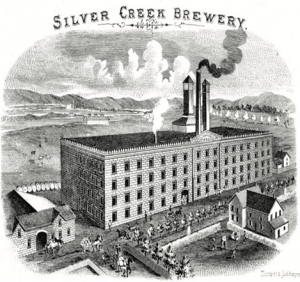
Established in 1834 by John H Sleeman. Brewed in Guelph Ontario and for good reason. John H Sleeman took time to research and find the best location and water source for brewing his beer. Sending samples back home to England to be tested, Guelphs Water supply came up aces. It is there where he opened The Silver Creek Brewery on Waterloo Avenue. This location was key as it was adjacent to Speed River where they would get the fresh water to brew their beer. Years later John would team up with his son George to form Sleeman & Son, with George taking over the Day-to-Day operations of the brewery. Keeping the Business in the family George Sleeman Sr’s son came on board George A Sleeman. In 1898 George A Sleeman finished his now legendary Sleeman Family Recipe book. In the pages of the leather-bound book was a legacy that would live on. With meticulous attention to detail the recipe for Sleeman Cream Ale was created. George Sr., his wife Sarah and three of their sons were together in business. They used the clear bottles that remain a family trademark today as well as the recipe. By 1916 The prohibition had started which would lead to a halt in sales and consumption of alcohol in Ontario and across Canada. This lead Henry Sleeman (son of George A Sleeman) and his brothers to smuggle beer into the Untied States and across Canada. They did this for almost ten years before they were caught. In 1933 the brothers were charged with smuggling and tax fraud. They were forced to sell the company to the government and the family was not allowed to brew beer for 50 years. This is where John W Sleeman finally takes possession of the company when he received the recipe book and an old bottle from his aunt.
Milestones & A Brief History
1834 John H Sleeman moves from his local town of Cornwall, England to upper Canada. This is where he opened his first brewery Stamford Springs Brewery.
1841 his son George Sleeman was born, the family then moved to Lockport New York to begin their journey in craft brewing.
1847 the Sleeman’s sell Stamford Spring Brewery and move to Guelph Ontario. It is here Where they purchase the land on Waterloo Ave. and open Silver Creek Brewery.
1859 and George Sleeman is 18 years old and ready for a new adventure. He joins forces with his father and they open Sleeman & Son. George takes on the day-to-day duties and runs the brewery.
1864 Canada Temperance Act passed, allowing counties and municipalities to prohibit the retail sale of alcohol if supported by a majority vote. This would lead to pivotal sales for Seeman’s and many breweries in the coming years.
1867 George A Sleeman was born.
| 1874 George Sleeman (Sr.) introduces bisulphate of soda to Sleeman beer, which acts as a stabilizer and preservative.
1886 George A. Sleeman manages the Brantford agency for four years 1898 George A. Sleeman finishes writing his recipe book. |
1902 The business fell on hard times when George (Sr.) chose to single-handedly fund the construction of the Guelph Railway Company. The investment yielded more debt than profit and led to the bank’s take-over of that company and the Silver Creek Brewery.
1903 George (Sr.), his wife Sarah and their sons opened a rival business called the Spring Bank Beverages.
1906 The Silver Creek Brewery was not profitable under the bank’s management and George (Sr.) purchased it back from the bank and merged the two businesses.
1916 The Ontario Temperance Act is passed and prohibits the sale of alcohol, but not the act of brewing or distilling liquor or alcohol.
1919 The US government enacts national prohibition.
1919-1927 Henry O Sleeman & Brothers (Sons of George A Sleeman) smuggled alcohol for more than a decade.
1933 Brothers were finally charged with smuggling and not paying their taxes. As a result, the Sleeman family’s brewing license was suspended, the brewery was sold, and the family was barred from brewing for 50 years.
1953 John W. Sleeman is born and adopted into the family
1975 John W Sleeman drops out of high school and moves to England in hopes to open a Pub.
1976-1978 John W Sleeman Moves Back to Canada and opens authentic English pub “The Major Oak”
1984 John W. Sleeman receives the historical leather-bound book of family recipes and an original heritage bottle from his Aunt Florian, leading the way to rebuilding the family brewing legacy.
1985 John W Sleeman officially incorporated Sleeman Brewing and Malting Co. Ltd
1988 October 14th at 6:15pm the first Sleeman bottle product filled on line since 1933 (Sleeman Cream Ale)
1994 Sleeman Brewing and Malting Co. Ltd. merged with Okanagan Springs Brewery to become Sleeman Breweries Ltd
2006 Sleeman Breweries Ltd Purchased by Sapporo for $400 million, but is till ran by John W Sleeman
Significant Historical Events 1830’s
August 1 1834: Slavery was abolished in the British empire
December 15 to 17, 1835 The Great Fire of New York destroyed a large part of lower Manhattan.
June 20, 1837: Victoria became Queen of Great Britain at the age of 18. She ruled for 61 years until 1901.
May 10, 1838: John Wilkes Booth, American actor and assassin of Abraham Lincoln, was born in Bel Air, Maryland.
Brew Styles
Crafted from the natural source of water in Guelph Ontario and using the Original Recipe to adapt many different flavors and styles. Here are some of Sleemans top selling beers as well as some affiliated companies that Sleemans has purchased over the years.
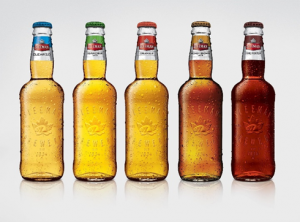
Honey Brown Lager: boasts a rich copper with a creamy, off-white foam, creating a full-bodied lager with a touch of natural honey and a slightly sweet finish
Sleeman Cream Ale: Authentic North American style combines the easy drinking nature of a lager and the rich fruity character of an ale
Sleeman Silver Creek: Full flavored lager brewed with the choicest European aroma hops. The extra body gives it extra smoothness. Well balanced Pilsener type lager.
Sleeman 2.0: Go’s well with your active lifestyle. A light beer at 4% alc/vol with a crisp, refreshing taste, 2g of carbohydrates and 80 calories per 341ml serving.
Sleeman Fine Porter: Dark Ruby, with 1 finger of white and brown head. Smell: Chocolate, hops, caramel. Taste: Very light on the chocolate taste, the carbonation is very present.
Above is a video showing off Sleemans lighter calorie friendly beer, this is showing that they offer many different varieties including for people not wanting to take in a huge calorie count during their night of fun or afternoon of patio beers.
Affiliated Brands
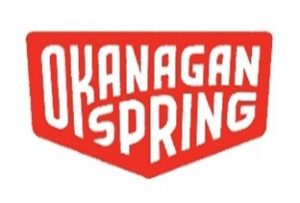
- In 1996, the Sleeman brewery purchased the Okanagan Spring Brewery and the consortium formed the new Sleeman Breweries Ltd.
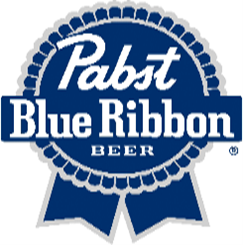

- In 1999 Sleeman Breweries acquired the right to market and distribute the Stroh family of brands in Canada from Pabst Brewing & Old Milwaukee .

- In 2004, the company bought Unibroue, Quebec’s largest craft brewer that was making a line of premium beers in Chambly, Quebec.

- In 2019, the company bought Wild Rose Brewery, a small craft brewery in Calgary, Alberta.
Marketing and Branding
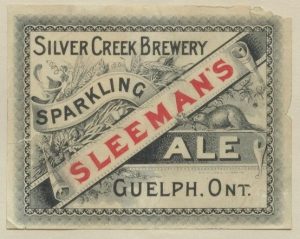
Branding was unique for the Sleeman family from day one, they set themselves apart by having their beer stored in the famous clear bottles. The trademark bottle started when they first brewed their beers in 1834 and never left. Staying with the age-old family recipe has always been a strong marketing tactic for the company. Brewed from Guelphs fresh source of water and a mastered recipe sent down from generation to generation was a recipe for success. By the time they re-opened in the late 1980’s marketing had changed a lot. From commercials to selling space at sports arenas they hit the ground running to get back out there to compete with other top brands. They also came up with the slogan “Notoriously Good”.
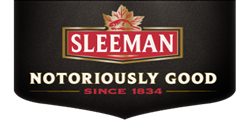
Below is a video for their add Sleeman Speak Easy.
Prohibition
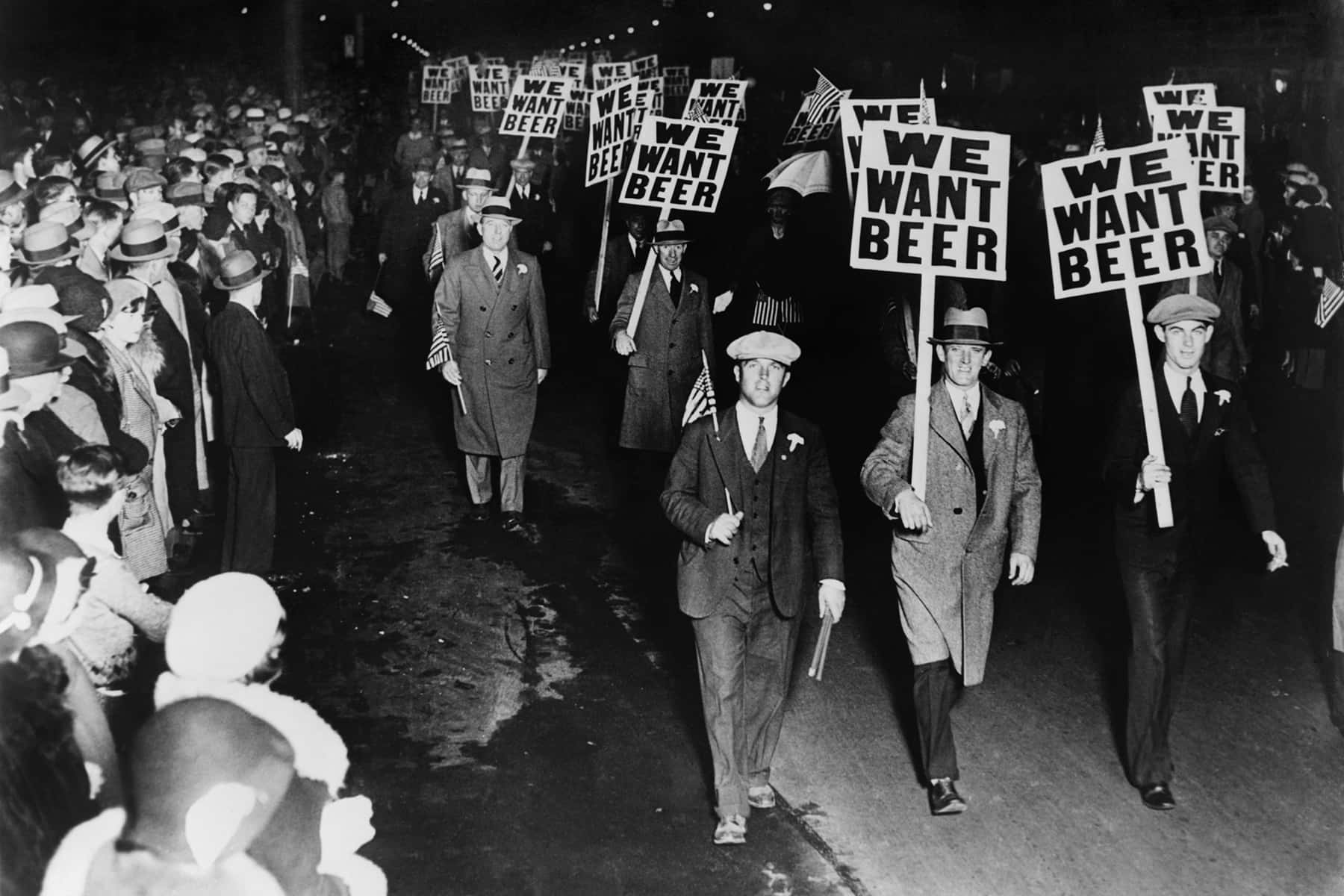
Business was going great for Sleeman in the 1860’s as son George took over the day-to-day business. The Guelph University Archives have letters mailed back in forth between George and his father. George wrote, “I need not complain, for I never had such a good lot of customers” and commented regarding his Silver Creek Brewery that “every man is in his place and attends to it, they know what I want done and they do it”. In a letter written later the same year dated 6 November 1869, George wrote, “things are great, and sales are very good… I expect I shall collect considerably money about the new year, if you are getting short don’t hesitate to let me know.” The Grand trunk railway was opened in the 1850’s which also led to great success for Sleeman, making it easier to acquire the ingredients to make his beer and make it easier to ship out.
In 1918 Prohibition had started, this lead to be a massive challenge for the Sleeman family. It stated that the sale and consumption of alcohol in Ontario would be illegal. This led to the halt of production for the Brewery in 1926. Although sale and consumption were illegal and banned the production of the beer was still legal as Sleeman was a legitimate business. They could produce their beer they just could not legally sell it. During the beginning of prohibition, the United States was still able to import alcohol but by 1920 they had also initiated a federal prohibition leading imports and exports to be illegal. It is said that Sleeman was involved in bootlegging beer into the United States. Fact checking on all this information is somewhat challenging as bootleggers rarely documented what they were doing as it could come back on them later.
There were urban legends that in 1920 when prohibition started the Sleeman family was linked to having ties with American gangster Al Capone. There was an article written in 1994 by Art Chauberlain. He stated, “like most Canadian beer and liquor companies, during prohibition in the US, Sleeman did a flourishing business selling to smugglers who slipped across the boarder”. This led to a major marketing ploy for Sleeman in the previous years which they added commercials filled with piracy, smuggling and philandering. All though these claims are very interesting and provided great advertisement for the beer, there is no real strong evidence to show that Sleeman was providing the beer for the famous American gangster AL Capone. It was more likely that the Sleeman family had connections with St. Catharines bootlegger Rocco Perri.
In the end the only main evidence of foul play with Sleeman has stated there was tax fraud and the possible bootlegging of beer into the United Sates. There were newspaper articles with the court case involving Henry Sleeman & his brothers (George Sleeman sons) and his tax evasion. This would lead to the closure of the brewery in 1933 until John A Sleeman would take over in the 1980’s
Quotes From an Interview with John W Sleeman
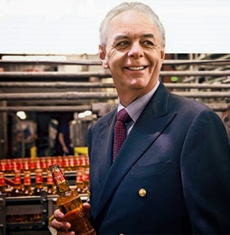
Why did your Aunt Florian come to you with this legacy? Did your siblings have any interest in joining in the venture?
She explained it to me this way: As a young girl, when she heard that the family was to be put out of business, she decided to save the recipe book and an old bottle, determined to wait the 50 years to see if any family member might be willing to resurrect the firm. By the time the 50 years probation period was up in the mid 1980s, there were many Sleeman family members in that generation, but I was the only one already in the beer business. I do have a sister, but she has a legal Profession.
You sat on it for some time before deciding to take what could be considered a leap of faith. What was the turning point that made you want to revive the family tradition?
When Florian approached me out of the blue with the recipe book and bottle, I was already heavily involved in the beverage alcohol business. I had built and run a pub in Oakville and then started and was running a company that imported beer from around the world, brands like Guinness and Heineken. I was intrigued with the idea of rebuilding the family brewery but was enjoying what I was doing…and I was also quite nervous about taking on the giants of the domestic beer business, who at the time were Molson, Labatt, and Carling. Because of that, I kept putting Florian off, until she finally used guilt to get me to take that “leap of faith,” saying that she “was getting elderly” and it would “mean a lot to her” if I would just try this before she died. How can a person resist that?
What was the landscape of craft beer culture back in 1988, and who were your main competitors at the time?
The craft beer culture was in its infancy in the mid- to late 1980s. That meant that we and a handful of other entrepreneurs were at the forefront [of] today’s movement. Firms like Sleeman, Creemore Springs, Brick, and Upper Canada all started around the same time, but we thought of the larger brewers as our competition, not our own small group of start-ups.
Source & Author for interview:
Beer Is In The Blood: An Interview with John W. Sleeman | KHACHILIFE
Brewing Science & Industrialization
Through research it seems that every beer company was greatly impacted by the industrialization period. Providing assembly lines for production sped up the brewing process immensely. The creation of the refrigerator was a huge success for the beer industry. This meant that lagers could be brewed in breweries in a controlled climate. The refrigerator also helped with storing and shipping beer nation wide. As mentioned above Sleeman used their iconic clear bottle to ship and store their beer in. this would sail off the brewing lie by the case and be shipped out across the country as well as the United States.
In 1847 George Sleeman (Sr.) introduces bisulphate of soda to Sleeman beer, which acts as a stabilizer and preservative. This led to Sleeman beer having longer shelf life. In 1889 George A. Sleeman finishes writing his recipe book. This would be a big moment for the Sleeman family as the book would include the recipes for all the family brews including the recipe for Sleeman Cream Ale one of their most iconic and popular brands of beer. As well as industrialization brewing science changed through the years, offering breweries more adapted methods to brewing beer. Unfortunately for Sleemans they missed a decent amount of the brewing science due to their ban of brewing for 50 years. When Sleemans began to brew again in the late 1980s pasteurization had been discovered leading a whole knew look on how beer should be brewed, stored, and shipped. Essentially when Sleemans began their new tenure in the brewing world it was a whole new ball game. Thankfully John W Sleeman the great great grandson of John H Sleeman was well adverse in brewing process and sales of alcohol. Below Shows a video of how modern industrialization has changed the brew process for a Sleeman affiliated brand Okanagan Springs Brewery.
https://www.bing.com/videos/search?q=sleeman+brew+process&&view=detail&mid=5453CF0B2D6DC8FE7E895453CF0B2D6DC8FE7E89&&FORM=VRDGAR&ru=%2Fvideos%2Fsearch%3Fq%3Dsleeman%2Bbrew%2Bprocess%26FORM%3DHDRSC4
The World War Era & Temperance Act
Sleemans was only affected by the First World War or the Great War as production of Sleemans was halted during the years of the second war. Ingredients were scarce during the first war as most of the supplies were used for food. Citizens were asked to stretch and ration their supplies to make sure we could make all of them last as long as they possibly could.
The government had wanted to set boundaries on alcohol consumption for some time. When the war started the used this as the avenue to set up new legislation concerning the sale and consumption of alcohol. During the years of the first world war the Temperance act had already started leading to the eventual start of prohibition. This would be detrimental to most breweries, but it seems Sleeman had found their way in the bootlegging community to keep their business afloat. As stated above this led to the closure of the brewery due to not paying taxes on the money made during the bootlegging times. This would lead to long term consequences for the brewery as they were forced to stop production for 50 years. Many Breweries were affected by the Temperance act, it caused many breweries to close their doors and never open again. Sleemans was one of the fortunate breweries that was able to reopen their doors for the production and sale of beer after their 50-year ban was lifted. The Video Below Explains Canadas post in the Great War and how the Temperance Act affected Alcohol during WW1.
Prohibition in Canada - YouTube
Consolidation
As Stated above Sleemans was really only affected by the first World War. By the time Sleemans had gotten back in the game in the 1980”s the beer game had changed completely. When John W. Sleeman received the recipe book form his great aunt and took over the business he had a fresh look at the industry. A beer lover at heart he had managed to follow the trends closely to make his start up in the new beer era pretty smooth. Sleemans made many acquisitions over the years to merge their brand with other successful brands such as Pabst Blue Ribbon, Okanagan Spring Brewery, and Unibroue. This would lead Sleemans to be purchased by Sapporo beer in 2006. Although, purchased by Sapporo Sleemans is still brewed in Canada and shipped world wide so everyone can taste their delicious beers.
Modern Era
In the modern era of beer it is all about branding, flavor and sales. Sleemans has done a great job on branding their name. The dive into the notorious stage of their brewing has been a big part of their brand. Keeping with the age old family recipe and how during the hard times of prohibition by bootlegging has set them apart from the competitors. As for flavor they have multiple different styles and flavors of beer, one to suit anyone’s beer tasting needs. Sleemans has merged with many brands throughout their tenure of brewing in the industry thus leading to great sales. they are just behind the big three companies in Canada and continue to have great sales over the years. Social media has played a great impact on not only Sleemans but many other beer companies. Social media can help impact sales, education and new younger or older customers that may not have been interested in drinking their product but now have easy access to information.
Above is a commercial showing the notorious side of Sleemans. I think this commercial is trying to reach out to younger of age drinkers to check out their brand.
References
Photos/video:
a9ce07eb2041cdd501a15d297eef8c63.jpg (2193×2400) (pinimg.com)
oldmil.jpg (706×500) (shorepoint.com)
Okanagan-spring-logo.jpg (859×564) (dailyhive.com)
logo_Wild-Rose-Brewery.jpg (952×678) (onbeer.org)
Unibroue-Logo_Black.jpg (3000×1500) (glunzbeers.com)
Sleeman_CaseStudy9-1920×1420.jpg (1920×1420) (milestoneintegrated.com)
65a3a59f56a7c57536ff2b2f774d5cd2.jpg (1024×818) (pinimg.com)
https://3.bp.blogspot.com/-NrZxfYYCJZw/U2f38x2uQpI/AAAAAAAAB4M/qXbhmbsKrzc/s1600/logo-sleeman-en.png
My First Million: Sleeman | CBC – YouTube
Raid at elk lake – Prohibition – Wikipedia
Prohibition in Canada – YouTube
Sleeman Clear 2.0 | Why Not Make it 2.0? – YouTube
SLEEMAN SPEAKEASY 2015 – YouTube
Websites:
https://www.guelphhistoricalsociety.ca/publications/historic-guelph/volume-52/the-sleeman-family-brewery-19th-century-paternalism-to-prohibition-inspired-myth
https://www.sleemanbreweries.ca/about
https://www.lib.uoguelph.ca/archives/our-collections/regional-early-campus-history/sleeman-collection/brewing-history/sleeman
https://www.encyclopedia.com/books/politics-and-business-magazines/sleeman-breweries-ltd
https://www.lib.uoguelph.ca/archives/our-collections/regional-early-campus-history/sleeman-collection/timeline-sleeman-family
https://sleeman.ca/en/our-beers
https://www.cbj.ca/john_sleeman_successful_canadian_entrepreneur/
https://khachilife.com/john-sleeman/
Chronology of Major Events in the 1830s (thoughtco.com)
https://www.thecanadianencyclopedia.ca/en/article/brewing-industry

